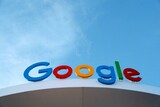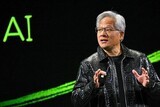Microsoft’s decision to expand its AI partnerships from OpenAI to Anthropic is rooted in a single idea: giving customers more freedom to choose the model that works best for them.
In an interview on Nov. 19, Brian Guud, Corporate Vice President overseeing Business Applications Marketing at Microsoft, said that each AI model excels in different tasks. He noted that enterprises should be able to select the model that fits the nature of their work instead of relying on a single system.

Different Models, Different Strengths
Guud explained that Microsoft’s approach is based on how differently AI models operate. Some tasks perform better on Anthropic’s models, while others are handled more effectively by OpenAI’s systems. This reality shaped Microsoft’s shift to a multi-model strategy.
For years, most Copilot services centered almost entirely on OpenAI’s ChatGPT. Users had raised concerns about accuracy in office-based tasks, which contributed to Microsoft’s pivot. The company now makes Anthropic’s Claude models available across its Office applications, and at Ignite 2025, Microsoft formally integrated Claude Opus, Claude Sonnet and Claude Haiku into the Azure ecosystem.
Guud added that there is no finalized guideline yet on which model fits which task. Microsoft plans to build recommendation systems based on benchmarks and evaluations.
The Rise of the AI Agent Era
Another topic emphasized at Ignite 2025 was Microsoft’s focus on AI agents.
Guud argued that adopting AI agents is no longer optional. He predicted that organizations worldwide, including those in the United States and Korea, will shift toward agent-based operating structures.
Microsoft defines a “frontier enterprise” as an organization that uses AI agents to significantly advance automation. According to Guud, companies that combine top-down leadership support with bottom-up employee engagement are the fastest to achieve this transformation.
To prevent the “confused deputy” problem, which occurs when too many independent agents cause operational disorder, Microsoft introduced a governance tool called Agent365. Guud said that seventy-one percent of customers have asked for ways to control and manage agents at scale.
Preserving Human-Centered Workflows
Asked whether AI agents will replace human roles, Guud stressed that humans will continue to guide the overall workflow. He said that companies generally adopt AI in three ways. They may assign every employee a personal agent, treat agents as part of a team or redesign operations around agents. Even in the third case, he said that humans remain the primary decision makers.
A Strategy Built on Model Choice and Agent Governance
Guud’s remarks illustrate the two pillars of Microsoft’s evolving AI strategy.
The first is its multi-model approach, which brings together both OpenAI and Anthropic in order to provide more tailored AI services for customers. The second is its emphasis on agent governance, centered on Agent365, which aims to support enterprises making large-scale transitions to AI-driven systems.
Together, these moves signal Microsoft’s ambition to reshape not only workplace tasks but also the broader architecture of enterprise operations in the age of AI.
Songa Choiㅣchoesonga627@gmail.com
- Sovereign AI: Where Jensen Huang and Lee Hae-jin Converge
- Microsoft Ignite 2025: The Age of the AI Turning Point
- [MS Ignite 2025] Microsoft Unveils AI Agents for Word, Excel and PowerPoint at Ignite 2025, Signaling a New Era of Office Productivity
- [MS Ignite 2025] Microsoft Unveils “Agent 365” to Bring Order to the AI Assistant Chaos

![[동학] 카카오톡 친구탭, 결국 12월 롤백… “격자형 피드는 선택 옵션으로”](https://cdn.kmjournal.net/news/thumbnail/custom/20251126/5517_10550_1119_1763853080_120.jpg)


![[테크 칼럼] 제미나이3, GPT-5.1을 넘다…AI는 이제 ‘일을 대신하는 시대’로 간다](https://cdn.kmjournal.net/news/thumbnail/custom/20251126/5457_10454_4847_1763621329_120.jpg)


![[낭만 테크 시대] AI 대항해 시대](https://cdn.kmjournal.net/news/thumbnail/custom/20251126/5603_10714_4334_1764121414_160.jpg)


